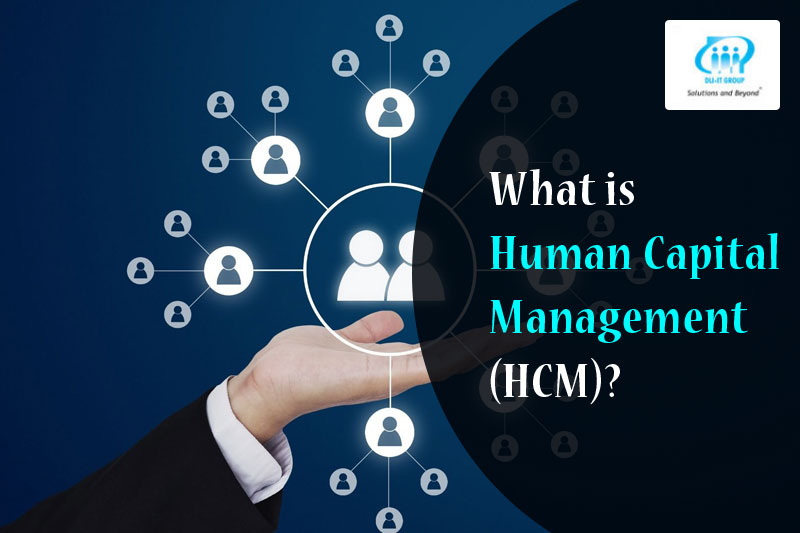Human Capital Management (HCM) is the integration of HR strategy with HR technology to improve people management. People are treated as assets rather than resources in HCM. HCM incorporates best practices in management to recruit, engage, develop, and retain talent.
What Are The Components Of HCM?
Combining HR strategy with HR digital solutions, HCM delivers an agile and engaging platform for everyone, from the junior level to C-suite.
These are the primary roles of HCM:
CORE HR: The HR application that houses people’s data, including financial and personal data.
TALENT MANAGEMENT: The process of recruitment, evaluation, and recognition cycle.
WORKFORCE MANAGEMENT: The task of time and attendance tracking, work scheduling, budgeting, and succession planning.
What Advantages Does HCM Offer?
HCM was specifically created for the modern, tech-driven workplace. An HCM system is crucial in medium-sized and big businesses for luring new workers, creating and keeping a productive, engaged staff, and cutting costs.
A good HCM system can make it possible to:
- Opportunities for career advancement
- Professional innovation and creativity
- Virtual cooperation and collaboration
- Deeper social bonds between coworkers
- Shorter time spent recruiting
- Modern compensation structures
- AI and automation for improved employee self-service
- Improved workforce trend data analysis
So, How Do We Describe An HCM Software?
HCM software consists of a wide range of related applications. HCM software, for instance, can include payroll, time and attendance, and other HR functions. Despite the fact that each application serves a distinct purpose, having them all in one software program is practical and improves HR’s ability to manage the workforce.
HCM systems are now frequently SaaS to give businesses conveniently accessible cloud-based services.
What Differentiates The Hcm From The HRMS?
People sometimes use the terms HCM and HRMS interchangeably since they provide similar solutions. But there are subtle variances.
HCM is all-inclusive. It covers HR practices and HR technology to assist in the management of all HR operations. For improved productivity and engagement, HCM stresses employee experience and strategic workforce optimization.
HRMS, on the other hand, primarily relates to software programs. An HRMS focuses on managing people with an emphasis on recording and organizing people’s data for better decision-making.
Because the distinctions between HCM and HRMS are minor, it is critical to compare the characteristics of each product when searching for HCM software.
How Do You Choose The Ideal HCM Software?
With so many HR software companies on the market, it can be difficult to choose which HCM software will best handle your company’s challenges. Here are four steps that can help you break down the choosing process into manageable tasks:
- Take a look at the system you’re now utilizing. You may be not sure which product is right for your organization. Make sure to solely take into account the systems that can combine with what you already have in order to focus on the pertinent software solutions.
- Assess your company’s needs and requirements. Each organization faces unique challenges and industry-specific issues. For example, a rapidly expanding high-tech firm may require a platform that is compatible with multiple time zones. A time and attendance app that allows employees to clock in and leave may be required for a manufacturing organization.
- Address the ongoing issues at your business. Is your organization seeing unusually high levels of turnover? Are HR professionals annoyed by an excessive administrative workload? Determine the unique difficulties facing your firm and prioritize them in order of importance.
- Be prepared. You might want to concentrate on what your firm needs right now. That is entirely understandable. Being ready for future workforce trends and internal changes, on the other hand, can be the difference between rough and seamless transitions. Companies need to ask themselves: Which HR processes take too long and need to be changed in order to meet our needs now and in the future? How can we improve our HR operations to increase employee engagement and retention? What are the objectives for our business’s expansion and staff planning?
How Can HR Leaders Include An HCM System In Their Overall Strategy?
HR executives are in charge of analyzing, selecting, strategizing, changing, monitoring, and assessing the HCM system. Here are some general pointers to help you keep on track during the implementation process:
- Determine your goals. HR directors may steer their HR ship in the right direction by defining organizational goals. HR leaders must address critical concerns such as which practices and components of HR procedures should be maintained and which should be modified.
- Identify opportunities for improvement. HR leaders might engage the assistance of individual team members and managers to compile a detailed list of difficulties they’ve personally encountered. Perhaps the onboarding process is poor, or performance evaluations do not promote sufficient employee input. Identifying weak points assists HR leaders in developing a strategy and a solution-oriented HCM technology.
- Establish a team. HR leaders can form a team of executives, division heads, and IT expertise to help with the HCM system integration.
- Create a game plan. A strategic plan developed by examining each problem and intentional preparation can assist HR leaders in realizing their objectives.
How Can A Well-designed HCM System Enhance Corporate Culture?
Due to the increase in remote work, businesses now rely on HCM solutions to guarantee employee happiness and a positive employee experience. HCM assists employees in contextualizing their jobs within their firm, developing strong interpersonal ties, and creating a sense of community at work. People are happier and may naturally contribute to developing a great business culture when they feel connected to their coworkers, their jobs, and their firm.
Contact us at info@dli-it.com to know more about HCM strategies that will suit your organization.
